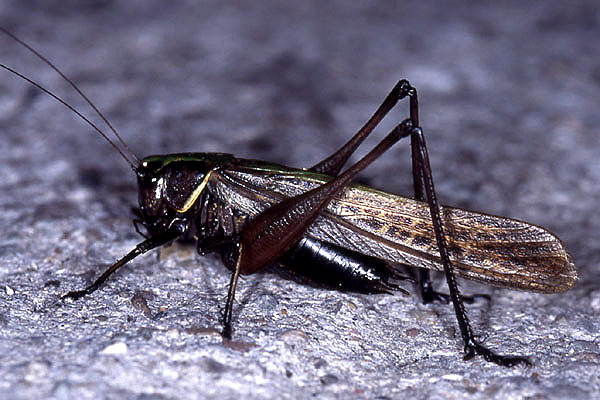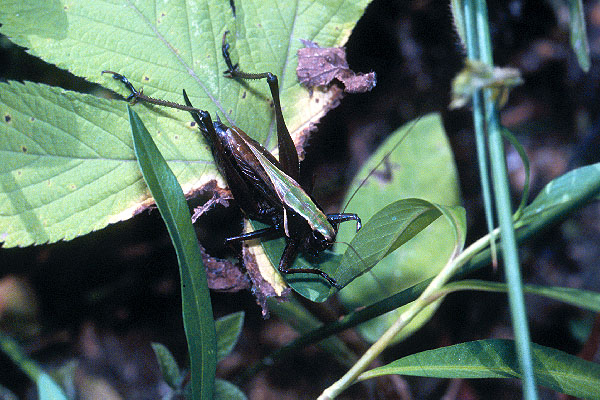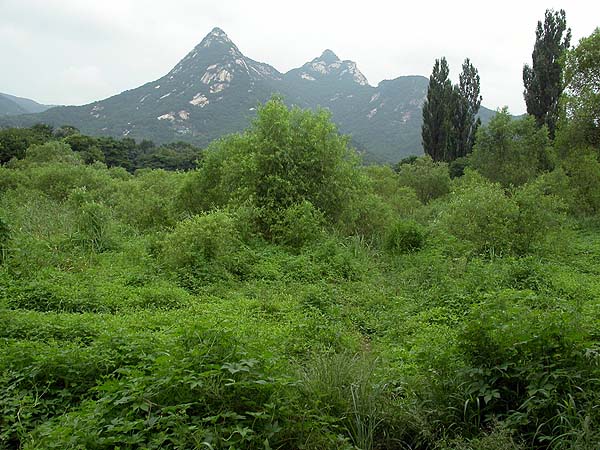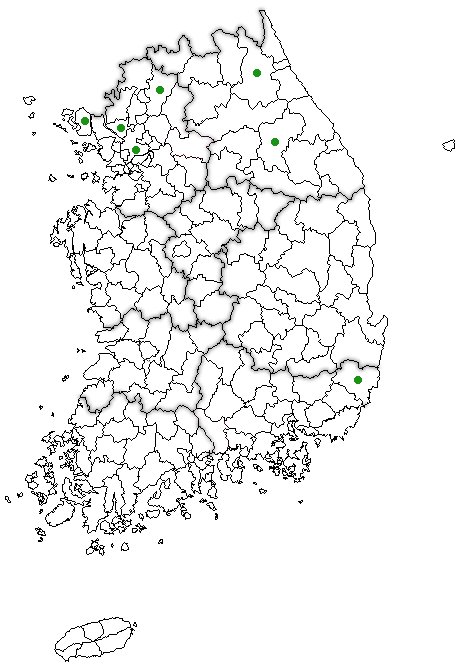애여치
Eobiana engelhardti (Uvarov 1926)
몸길이는 약 22-25 ㎜이며 갈색형과 부분적인 녹색형이 있다. 앞날개는 복부의 중간을 약간 더 덮는 정도로 짧은 중시형이 보통이나, 간혹 환경 조건에 따라 장시형이 나타난다. 앞날개 끝은 중시형에서 뾰족하지만 장시형에서는 둥글다. 평지의 물가 초원이나 습지 부근 등에서 국지적으로 발견된다. 일본, 러시아에도 분포한다.

수컷
장시형 (Macropterous male) 사진제공: 강태화 님

암컷
(Female)

서식처
(Habitat)
Original description:
Metrioptera engelhardti
Uvarov 1926 Ann. Mag. Nat. Hist. 9(17): 281, fig. 7.
♀. Similar in size and in habitus
to M. albopunctata Goeze (=grisea F.). Head small,
pronotum covering it almost to the eyes. Fastigio-frontal suture
scarcely longer than the width of the first antennal joint. Pronotum
relatively shorter and broader than in M. albopunctata; its
base scarcely narrowed anteriorly, practically flat and smooth in
prozona, very slightly impressed and distinctly punctured in metazona;
hind margin very broadly rounded; lateral keels very much rounded;
median keel distinct in metazona, faintly indicated in prozona;
lateral lobes less high than in M. albopunctata, with the
anterior margin more oblique. Prosternum unarmed. Mesosternal lobes
much longer than at the base, broad, their apical angles about 30°.
Metasternal lobes not longer than broad, their apical angles straight.
Elytra extending well beyond the hind knees. Hind femora relatively
shorter than in M. albopunctata and more suddenly attenuate
behind the middle, coarsely punctured above. Last sternites without
any peculiar structures. Subgenital plate unusually narrow and long,
covering the basal fourth of ovipositor; its lower surface finely
keeled along the middle, slightly impressed sideways; apex narrow,
deeply and very acutely excised; apical lobes lying very closely
to sides of ovipositor, with the inner margins rounded, the outer
margins straight, and the apical angles slightly less than
90°. Ovipositor like that of M. albopuntata, but more
strongly narrowed in tile apical half.
Coloration
castaneous, shiny. Head with shining black postocular fasciae, and
an indefinite blackish median fascia on the occiput, including a
fine pale line. Mandibulae black, with brown apices. Pronotal lateral
lobes shiny blackish-castaneous, quite black above, very narrowly
and not sharply marginated with pale posteriorly and (less distinctly)
anteriorly. Elytra smoky, with indefinite castaneous spots. Wings
distinctly infumate towards the apices. All femora black above,
the hind ones black externally as well, getting paler in the attenuate
part, but the knees are blackened.
Length of body
17; pronotum 6; elytra 27.5; hind femur l9; ovipositor 10 ㎜.
Another
female (paratype) is of a pale coloration, with the black colour
less spread, but otherwise not distinct from the type.
Named
after Mr. V.M. Engelhadt, ardent naturalist and painstaking observer,
who collected it.
Although I compare this fine new
species with M. albopunctata Goeze (=grisea, F.),
I do so only in order to make clear its chief characters, but not
to indicate the relationship. Indeed, I think that M. engelhardti
is nearer to the group brachyptera-roeseli than to M. albopunctata;
this question, however, cannot be settled until the male is known.
The
new species is very easily recognisable by the highly peculiar shape
of the female subgenital plate, by the pronotum not narrowed anteriorly,
and by its coloration.

<참고문헌>
● Kim JI and Kim TW 2001. Taxonomic review of Korean Tettigoniinae (Orthoptera: Tettigoniidae). Korean J. Entomol. 31(2): 91-100.